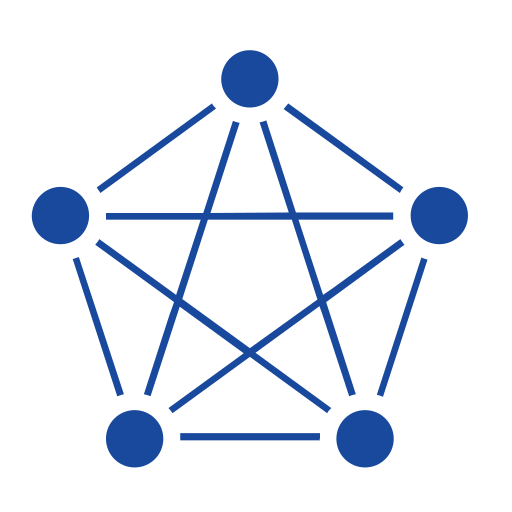DuckDB vs TDengine
A detailed comparison
Compare DuckDB and TDengine for time series and OLAP workloads
Learn About Time Series DatabasesChoosing the right database is a critical choice when building any software application. All databases have different strengths and weaknesses when it comes to performance, so deciding which database has the most benefits and the most minor downsides for your specific use case and data model is an important decision. Below you will find an overview of the key concepts, architecture, features, use cases, and pricing models of DuckDB and TDengine so you can quickly see how they compare against each other.
The primary purpose of this article is to compare how DuckDB and TDengine perform for workloads involving time series data, not for all possible use cases. Time series data typically presents a unique challenge in terms of database performance. This is due to the high volume of data being written and the query patterns to access that data. This article doesn't intend to make the case for which database is better; it simply provides an overview of each database so you can make an informed decision.
DuckDB vs TDengine Breakdown
 |
 |
|
| Database Model | Columnar database |
Time series database |
| Architecture | DuckDB is intended for use as an embedded database and is primariliy focused on single node performance. |
TDengine can be deployed on-premises, in the cloud, or as a hybrid solution, allowing flexibility in deployment and management. |
| License | MIT |
AGPL 3.0 |
| Use Cases | Embedded analytics, Data Science, Data processing, ETL pipelines |
IoT data storage, industrial monitoring, smart energy, smart home, monitoring and observability |
| Scalability | Embedded and single-node focused, with limited support for parallelism |
Horizontally scalable with clustering and built-in load balancing. TDengine also provides decoupled compute and storage as well as object storage support for data tiering in some versions |
Looking for the most efficient way to get started?
Whether you are looking for cost savings, lower management overhead, or open source, InfluxDB can help.
DuckDB Overview
DuckDB is an in-process SQL OLAP (Online Analytical Processing) database management system. It is designed to be simple, fast, and feature-rich. DuckDB can be used for processing and analyzing tabular datasets, such as CSV or Parquet files. It provides a rich SQL dialect with support for transactions, persistence, extensive SQL queries, and direct querying of Parquet and CSV files. DuckDB is built with a vectorized engine that is optimized for analytics and supports parallel query processing. It is designed to be easy to install and use, with no external dependencies and support for multiple programming languages.
TDengine Overview
TDengine is a high-performance, open source time series database designed to handle massive amounts of time series data efficiently. It was created by TAOS Data in 2017 and is specifically designed for Internet of Things (IoT), Industrial IoT, and IT infrastructure monitoring use cases. TDengine has a unique hybrid architecture that combines the advantages of both relational and NoSQL databases, providing high performance, easy-to-use SQL for querying, and flexible data modeling capabilities.
DuckDB for Time Series Data
DuckDB can be used effectively with time series data. It supports processing and analyzing tabular datasets, which can include time series data stored in CSV or Parquet files. With its optimized analytics engine and support for complex SQL queries, DuckDB can perform aggregations, joins, and other time series analysis operations efficiently. However, it’s important to note that DuckDB is not specifically designed for time series data management and may not have specialized features tailored for time series analysis like some dedicated time series databases.
TDengine for Time Series Data
TDengine is designed from the ground up as a time series database, so it will be a good fit for most use cases that heavily involve storing and analyzing time series data.
DuckDB Key Concepts
- In-process: DuckDB operates in-process, meaning it runs within the same process as the application using it, without the need for a separate server.
- OLAP: DuckDB is an OLAP database, which means it is optimized for analytical query processing.
- Vectorized engine: DuckDB utilizes a vectorized engine that operates on batches of data, improving query performance.
- Transactions: DuckDB supports transactional operations, ensuring the atomicity, consistency, isolation, and durability (ACID) properties of data operations.
- SQL dialect: DuckDB provides a rich SQL dialect with advanced features such as arbitrary and nested correlated subqueries, window functions, collations, and support for complex types like arrays and structs
TDengine Key Concepts
- Super Table: A template for creating multiple tables with the same schema. It’s similar to the concept of table inheritance in some other databases.
- Sub Table: A table created based on a Super Table, inheriting its schema. Sub Tables can have additional tags for categorization and querying purposes.
- Tag: A metadata attribute used to categorize and filter Sub Tables in a Super Table. Tags are indexed and optimized for efficient querying.
DuckDB Architecture
DuckDB follows an in-process architecture, running within the same process as the application. It is a relational table-oriented database management system that supports SQL queries for producing analytical results. DuckDB is built using C++11 and is designed to have no external dependencies. It can be compiled as a single file, making it easy to install and integrate into applications.
TDengine Architecture
TDengine uses a cloud native architecture that combines the advantages of relational databases (support for SQL querying) and NoSQL databases (scalability and flexibility).
Free Time-Series Database Guide
Get a comprehensive review of alternatives and critical requirements for selecting yours.
DuckDB Features
Transactions and Persistence
DuckDB supports transactional operations, ensuring data integrity and durability. It allows for persistent storage of data between sessions.
Extensive SQL Support
DuckDB provides a rich SQL dialect with support for advanced query features, including correlated subqueries, window functions, and complex data types.
Direct Parquet & CSV Querying
DuckDB allows direct querying of Parquet and CSV files, enabling efficient analysis of data stored in these formats.
Fast Analytical Queries
DuckDB is designed to run analytical queries efficiently, thanks to its vectorized engine and optimization for analytics workloads.
Parallel Query Processing
DuckDB can process queries in parallel, taking advantage of multi-core processors to improve query performance.
TDengine Features
Data ingestion
TDengine supports high-speed data ingestion, with the ability to handle millions of data points per second. It supports batch and individual data insertion.
Data querying
TDengine provides ANSI SQL support with additional that allows users to easily query time series data using familiar SQL syntax. It supports various aggregation functions, filtering, and joins.
Data retention and compression
TDengine automatically compresses data to save storage space and provides data retention policies to automatically delete old data.
DuckDB Use Cases
Processing and Storing Tabular Datasets
DuckDB is well-suited for scenarios where you need to process and store tabular datasets, such as data imported from CSV or Parquet files. It provides efficient storage and retrieval mechanisms for working with structured data.
Interactive Data Analysis
DuckDB is ideal for interactive data analysis tasks, particularly when dealing with large tables. It enables you to perform complex operations like joining and aggregating multiple large tables efficiently, allowing for rapid exploration and extraction of insights from your data.
Large Result Set Transfer to Client
When you need to transfer large result sets from the database to the client application, DuckDB can be a suitable choice. Its optimized query processing and efficient data transfer mechanisms enable fast and seamless retrieval of large amounts of data.
TDengine Use Cases
IoT data storage and analysis
TDengine is designed to handle massive amounts of time series data generated by IoT devices. Its high-performance ingestion, querying, and storage capabilities make it a suitable choice for IoT data storage and analysis.
Industrial IoT monitoring
TDengine can be used to store and analyze data from industrial IoT sensors and devices, helping organizations monitor equipment performance, detect anomalies, and optimize operations.
Infrastructure Monitoring
TDengine can be used to collect and analyze time series data from IT infrastructure components, such as servers, networks, and applications, facilitating real-time monitoring, alerting, and performance optimization.
DuckDB Pricing Model
DuckDB is a free and open-source database management system released under the permissive MIT License. It can be freely used, modified, and distributed without any licensing costs.
TDengine Pricing Model
TDengine is open source and free to use under the AGPLv3 license. TDengine also offers commercial licenses and enterprise support options for organizations that require additional features, support, or compliance with specific licensing requirements.
Get started with InfluxDB for free
InfluxDB Cloud is the fastest way to start storing and analyzing your time series data.
